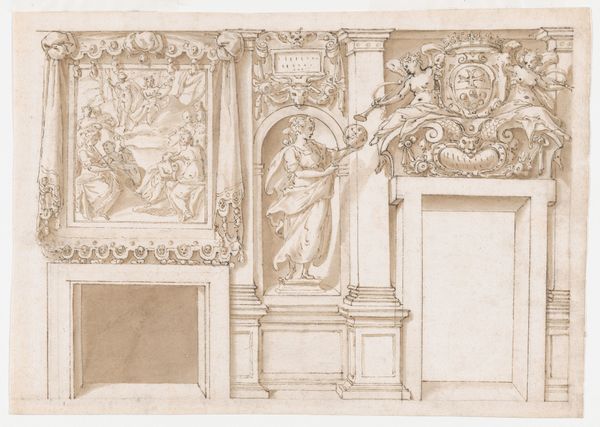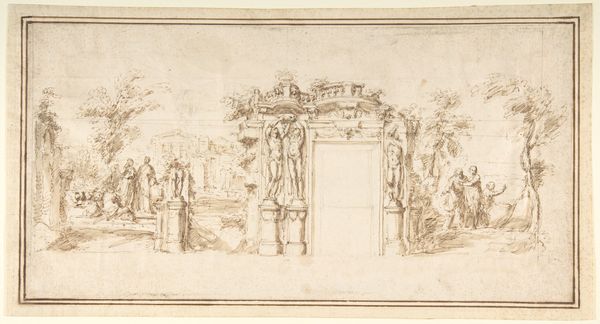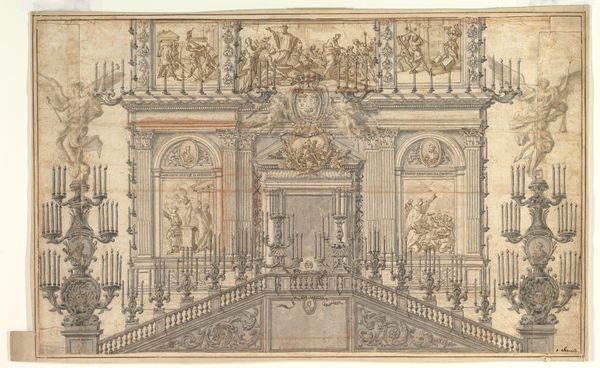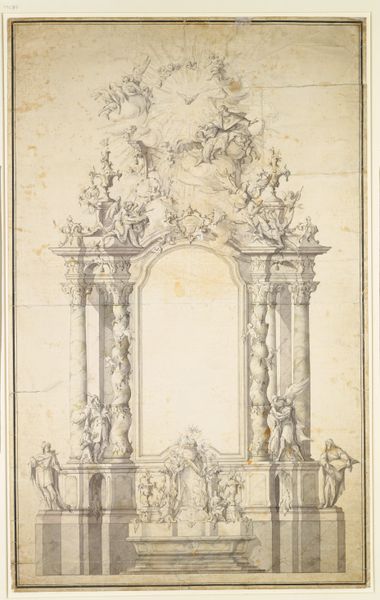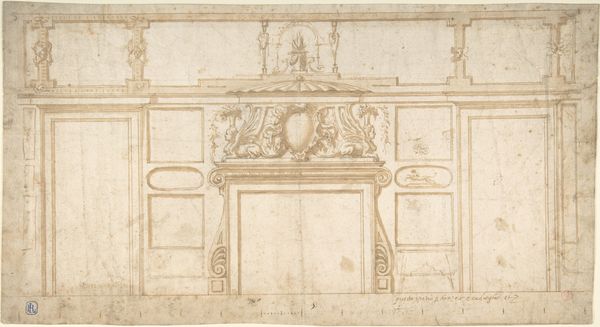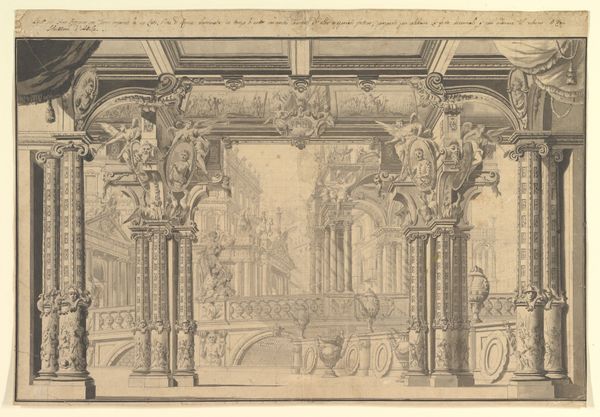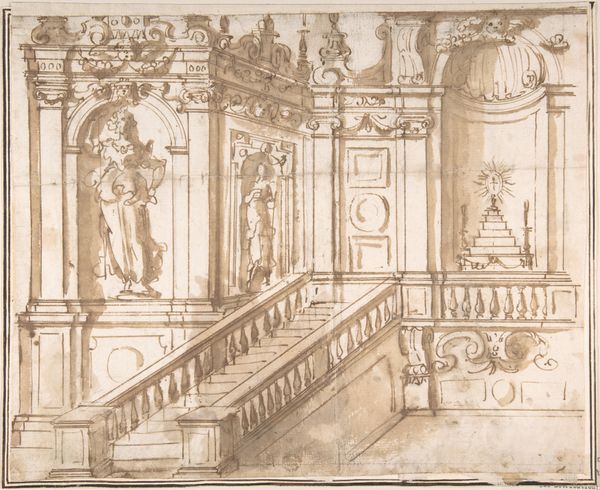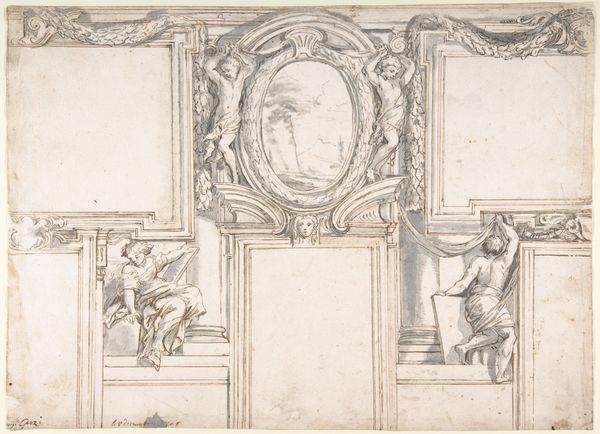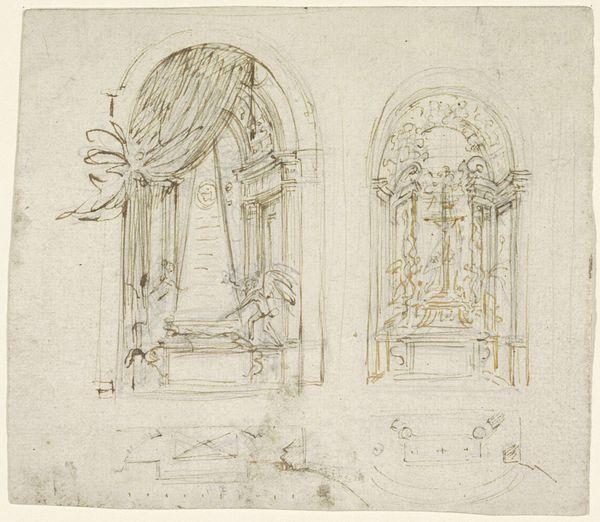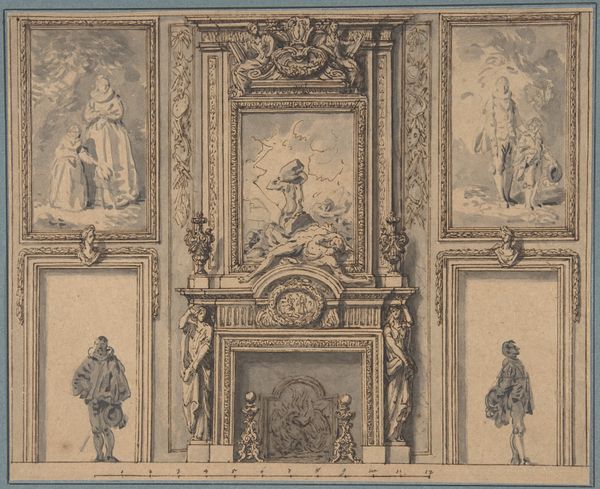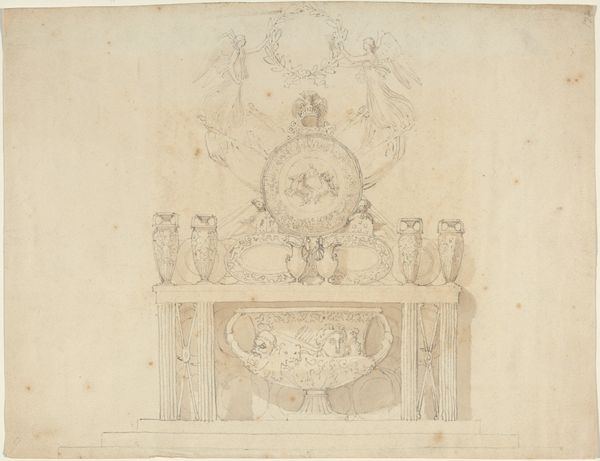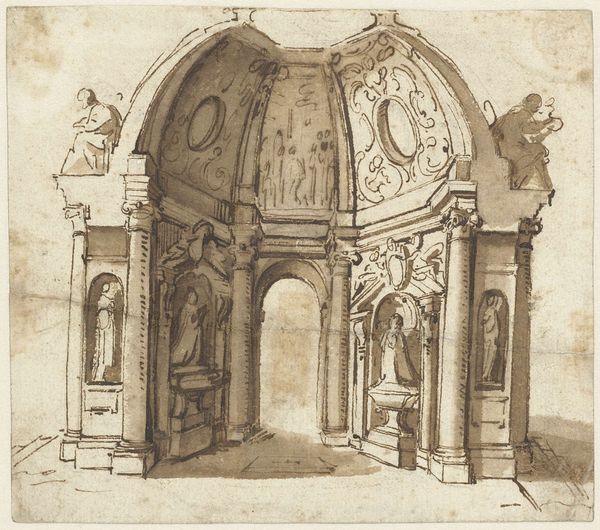
Design for a Garden Fête with a Semi-circular Wall and Statues in Niches. 1615 - 1679
0:00
0:00
drawing, paper, ink, architecture
#
drawing
#
paper
#
11_renaissance
#
ink
#
history-painting
#
architecture
Dimensions: sheet: 10 3/8 x 13 3/4 in. (26.4 x 35 cm)
Copyright: Public Domain
Curator: This drawing, "Design for a Garden Fête with a Semi-circular Wall and Statues in Niches," is attributed to Francesco Allegrini and was created sometime between 1615 and 1679. It’s rendered in ink on paper and gives us a peek into the architectural dreams of the Renaissance. Editor: Oh, wow, what a stage! It feels like a dream pulled straight from a summer night's performance. The curved wall hugs you in, almost like it wants to tell you a secret. Curator: Precisely. The semi-circular structure likely would have acted as a stage for performances, reinforcing power dynamics within courtly settings. Consider the labor involved—quarrying the stone, carving those detailed sculptures… it represents a significant investment. Editor: The figures feel caught in a perpetual ballet. Those little niches are like miniature prosceniums themselves. Did people actually *use* this space, or was it more about showing off possibilities? Curator: Likely a blend of both. Feasts, theatrical displays, elaborate games… it was all performative, asserting cultural capital. The drawing itself functioned as a proposal, an artifact of Allegrini’s skill in attracting patronage through refined draftsmanship. Editor: There's this breezy looseness in the inking too that keeps the grandeur from being stiff. It’s a proposal, yes, but there's also a kind of hopeful lightness that feels…human. Like the artist imagined the music and laughter in this space. Curator: The architectural design elements borrow classical motifs to solidify the status of the patrons that the construction will celebrate, from balustrades to the niched statues, all would’ve been made by specialized labor. Allegrini positions his skills as an entrepreneur. Editor: And now we stand here, centuries later, witnesses to those aspirations on a sheet of paper. There’s something unexpectedly intimate about seeing this blueprint of a party waiting to happen. Curator: A material record of cultural ambitions rendered visible through pigment, ground, suspended in a solution, and deposited with a quill on paper—the making of such architectural ideas accessible across vast stretches of time. Editor: Leaving me wondering about the stories that space, real or imagined, never got to tell.
Comments
No comments
Be the first to comment and join the conversation on the ultimate creative platform.
